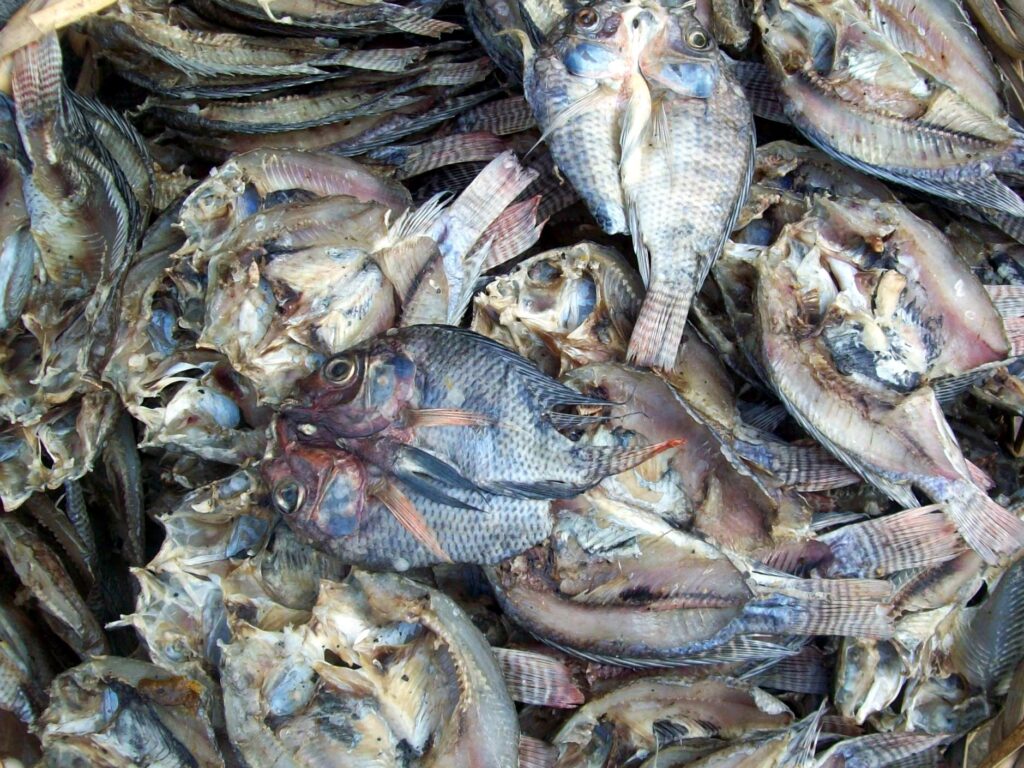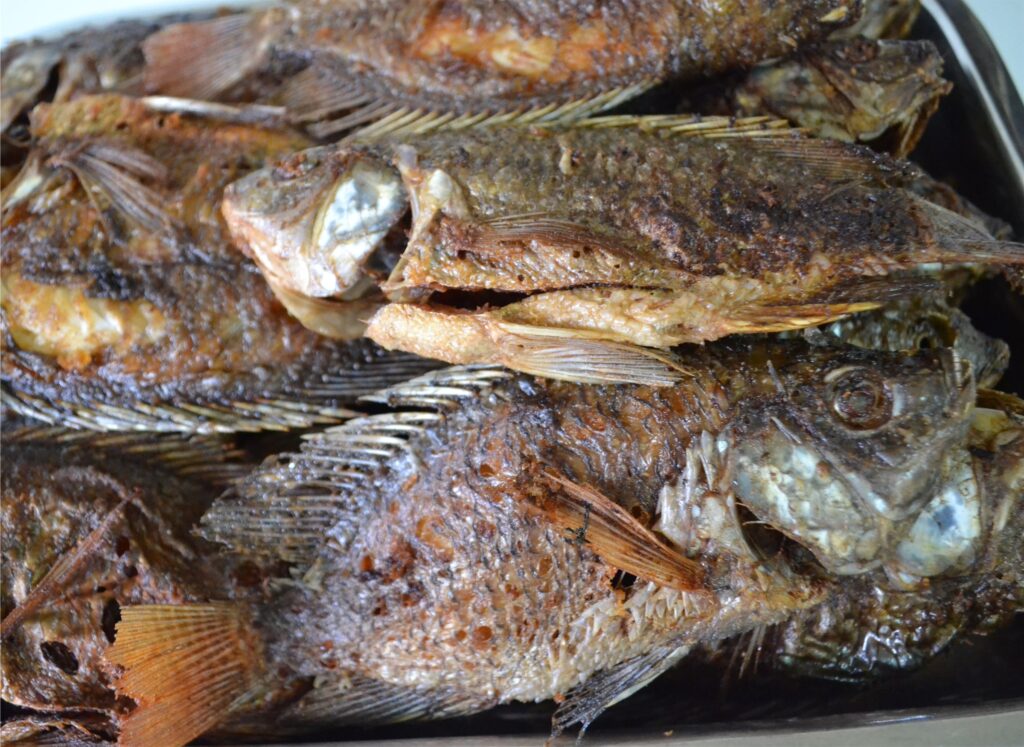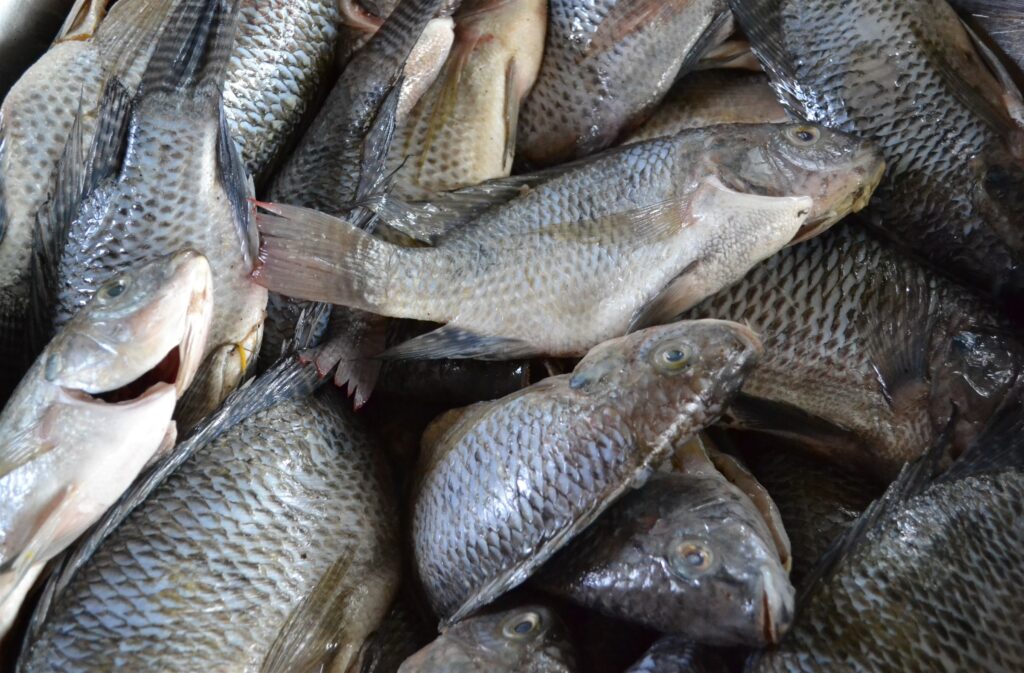Text and Photos by Henrylito D. Tacio
Fish provides more than half of the protein requirement of almost all Filipinos. At this rate, this makes the Filipinos one of the world’s biggest fish consumers. This must be the reason why the current dwindling fish catch alarms experts. “Unless we look for other sources of protein, the food intake of Filipinos will be greatly affected,” a government official said.
To solve the problem, some fishery experts are batting for aquaculture. It is the raising of fish and other aquatic life in protected enclosure or in controlled, natural environments. One of its key benefits is its potential for reducing pressure on marine fisheries.
In the Philippines, tilapia is now the second most important fish – after bangus. Tilapia fish pens are a common sight in almost all the major rivers and lakes in the country, including Laguna de Bay, Taal Lake, and Lake Sebu. It is very popular among Filipinos who cooked the fish in different ways, including fried, grilled, sinigang (a sour soup using tamarind, santol, guava or calamansi as a base) and paksiw (similar to sinigang only it uses vinegar).
Dr. Rafael D. Guerrero III, the man who popularized tilapia in the Philippines, touted tilapia as the “country’s wave of the future.” As he puts it, “We are now one of the world’s leading producers of tilapia.”
The fishery expert found out that tilapias are among the easiest and most profitable fish to farm. “The tilapia has good attributes that make it suitable for aquaculture,” he says. “It matures early, breeds readily and is a hardy fish.”
Most of the tilapia raised in the Philippines are consumed locally. However, there is a growing international market demand for tilapia as a foodfish. In the United States and Europe, tilapia is getting a lot of attention.
Tilapia can be raised in cages, tanks or in ponds in monoculture or in polyculture with other fishes. Integrated farming with other agriculture crops has also been done. Culture technique may be extensive, semi-intensive, or intensive.
The Iloilo-based Southeast Asian Fisheries Development Center (SEAFDEC) shares the following information on the culture of tilapia:
Cage culture: Cages are installed in lakes, dams, rivers, raceways, canals, and impoundments or even in the open sea. The use of cages has many advantages over ponds and tanks: Cages are less expensive, stocking density can be increased, and management is relatively easy.
Fish cages can either be fixed or stationary or floating, depending on the depth of the water. In fixed or stationary cages, the cages are attached to a staked bamboo (30 centimeters deep). Its basic framework consists of nylon net sewn similar to an inverted mosquito net. The net flooring which may or may not touch the bottom is kept at least 0.5 meter above the water level. A brace strengthens the posts while a cover protects the stocks from floods and poaches.
In floating cages (recommended for 5 meters deep), the net cages are attached to bamboo rafts. Lead sinkers attached to the flooring holds the structure in place. A freeboard of one meter is left above the waterline. Bamboo rafts, oil drums, or Styrofoam may be used as floats.
Ponds: Tilapia ponds vary from 0.25 to two hectares. The enclosing dikes are about 1.5 to 2 meters high. Water depth of one to 1.5 meters is maintained (freeboard is about 0.5 meter). The pond bottom should be well compacted to minimize seepage.
Tanks: The intensive culture of tilapia in tanks requires artificial feeds, thus water management is critical. Rectangular concrete tanks are suitable in limited areas. A tank of size 20 to 500 square meters and 1.2 to 1.5 meters deep may vary in shape: rectangular, square, octagonal, or circular.
The amount and kind of feeds depend on the culture method used. “Feed is required in tank culture systems or in waters with low primary production,” SEAFDEC said. “Feeding rate can be adjusted depending on the average weight of the fish.”
Tilapia in cages used to enjoy the plankton-rich lakes and needed only minimal supplement feeding. Such is not the case anymore today – what with the congestion of cages in lakes.
“The use of supplemental feeds is necessary in intensive or semi-intensive culture,” SEAFDEC stated. “Organic or inorganic fertilizer is needed for natural food production in the first two months of culture. In the third or four month, however, natural food becomes limiting, hence feeding is necessary.”
The Bureau of Fisheries and Aquatic Resources in Cagayan province, has found that that small floating plants in fishponds, called azolla or duckweeds, can effectively substitute for half of the commercial feeds for tilapia production. The study also found out that a 50-50 combination of fresh azolla and commercial feeds recorded a higher tilapia growth rate than pure commercial feeds.
At the MBRLC, research has shown that you can make your tilapia pond more productive and profitable by raising a pig at the site of the pond. Pig wastes go directly to the pond and help to fertilize the tiny plants that serve as the tilapia’s main food. Tests have proven that tilapia cultured in this kind of pond can be eaten without any harmful effect.
“Tilapia is here to stay in the country,” said Dr. Guerrero. “Its farming should be further promoted in upland and coastal areas of the country where fisheries production will be adversely affected by climate change.”
To make tilapia available to all Filipinos, certain problems like the lack of quality fingerlings in areas like the Visayas and Mindanao and the need for extension services to fish farmers must be solved first. “The establishment of more private hatcheries and the pushing of a national extension program will definitely help,” he says. — ###





